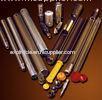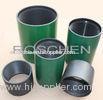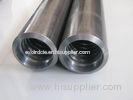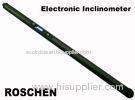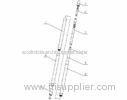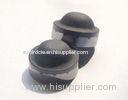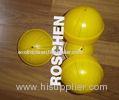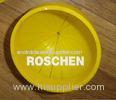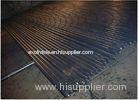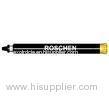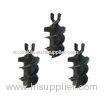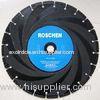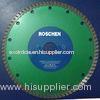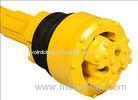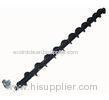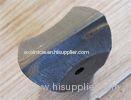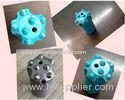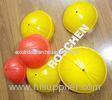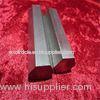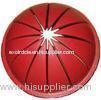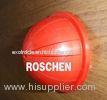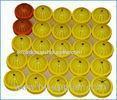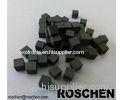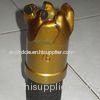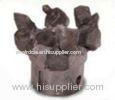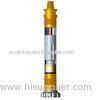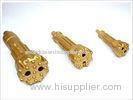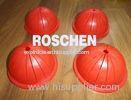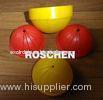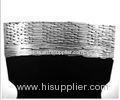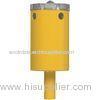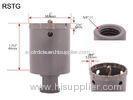|
ROSCHEN
|
Standard Split Spoon Sampler Soil Sampling Tools / Soil Testing Equipment
| Place of Origin: | Zhejiang, China (Mainland) |
|
|
|
| Add to My Favorites | |
| HiSupplier Escrow |
Product Detail
Standard Split Spoon Sampler Soil Sampling Tools / Soil Testing Equipment
S
Standard Split Spoon Sampler Soil Sampling Tools / Soil Testing Equipment
SPT Sampler
Split Spoon Sampler
SPT Split Tube Sampler
Standard Penetration Test Sampler
Split Spoon Sampler 2" for lithological description and chemical analysis
Split Barrel Soil Sampler
SPT Sampler
Split Spoon
SPT Sampler
Split Spoon Sampler
Standard Penetration Test (SPT)
Standard Penetration Test Sampler
Geotechnical investigation
Standard penetration test
Standard Penetration Test (SPT)
The standard penetration test (SPT) is an in-situ dynamic penetration test designed to provide information on the geotechnical engineering properties of soil. The test procedure is described in the British Standard BS EN ISO 22476-3, ASTM D1586 and Australian Standards AS 1289.6.3.1. A detailed description of SPT test and procedure can be found on the geotechnical data
Procedure:
The test uses a thick-walled sample tube, with an outside diameter of 50 mm and an inside diameter of 35 mm, and a length of around 650 mm. This is driven into the ground at the bottom of a borehole by blows from a slide hammer with a weight of 63.5 kg (140 lb) falling through a distance of 760 mm (30 in). The sample tube is driven 150 mm into the ground and then the number of blows needed for the tube to penetrate each 150 mm (6 in) up to a depth of 450 mm (18 in) is recorded. The sum of the number of blows required for the second and third 6 in. of penetration is termed the "standard penetration resistance" or the "N-value". In cases where 50 blows are insufficient to advance it through a 150 mm (6 in) interval the penetration after 50 blows is recorded. The blow count provides an indication of the density of the ground, and it is used in many empirical geotechnical engineering formulae.
Purpose:
The main purpose of the test is to provide an indication of the relative density of granular deposits, such as sands and gravels from which it is virtually impossible to obtain undisturbed samples. The great merit of the test, and the main reason for its widespread use is that it is simple and inexpensive. The soil strength parameters which can be inferred are approximate, but may give a useful guide in ground conditions where it may not be possible to obtain borehole samples of adequate quality like gravels, sands, silts, clay containing sand or gravel and weak rock. In conditions where the quality of the undisturbed sample is suspect, e.g. very silty or very sandy clays, or hard clays, it is often advantageous to alternate the sampling with standard penetration tests to check the strength. If the samples are found to be unacceptably disturbed, it may be necessary to use a different method for measuring strength like the plate test. When the test is carried out in granular soils below groundwater level, the soil may become loosened. In certain circumstances, it can be useful to continue driving the sampler beyond the distance specified, adding further drilling rods as necessary. Although this is not a standard penetration test, and should not be regarded as such, it may at least give an indication as to whether the deposit is really as loose as the standard test may indicate.
The usefulness of SPT results depends on the soil type, with fine-grained sands giving the most useful results, with coarser sands and silty sands giving reasonably useful results, and clays and gravelly soils yielding results which may be very poorly representative of the true soil conditions. Soils in arid areas, such as the Western United States, may exhibit natural cementation. This condition will often increase the standard penetration value.
The SPT is used to provide results for empirical determination of a sand layer's susceptibility to earthquake liquefaction, based on research performed by Harry Seed, T. Leslie Youd, and others.
Standard Penetration Equipment
In order to carry out the Standard Penetration Test (SPT) to BS 1377:Part 9:1990. The Auto Trip Hammer, SPT Drive Rods and a Split Tube Sampler are worked together.
The basic operation of the complete set Standard Penetration Equipment are like the following sketch shows.
Description of goods:
SPT Split Tube Sampler is for doing the Standard Penetration Test (SPT). We manufacture it according to BS 1377: Part 9: 1990. A Top ball valve Adaptor, a pair of Split Spoons, and an open SPT Shoe compose a complete set of SPT Sampler. Both plastic type and steel type basket retainers are available. The ball valve adaptor prevents sample from being washed out of the sampler when the sampler is withdrawn from the borehole. A 60 degree nose cone and long solid rod with 60 degree point are available as well. The screw connection on the top adaptor depends on the type of drill rods being used to drive the sampler, but is most frequently 1.1/2" B.S. Whitworth, NWY Rod, BW or AW Rod.
Composition:
Split Spoon compose of Sample Spoon Head, Split Tube, SPT Adaptor, SPT Shoe, Basket Retainer.
Specifications:
The standard Split Tube Sampler is 2" (50.8 mm) OD x 1.3/8" (34.9 mm )ID x 18” (457mm)/ 24" (610 mm) long. For heavy driving conditions, the Heavy-duty "Tuflok" design is available.





